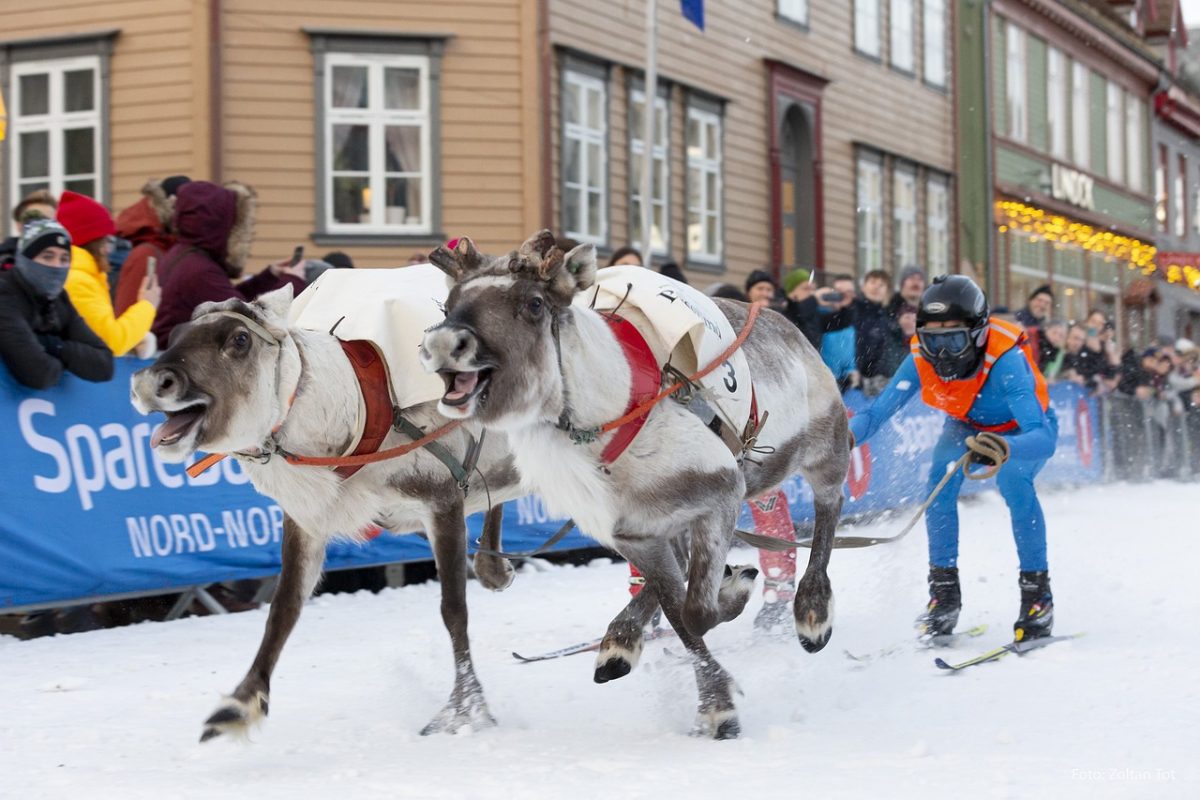Tromsø Sami tours are valuable excursions that’ll educate you about Northern Norway’s indigenous population. I experienced a few of them on my winter trip to Norway, learning about the native Sami people as I went.
The Arctic wind howled as the blizzard of snow whipped around us. My toes felt like icicles as I gingerly stepped into the large enclosure containing around 300 reindeer, holding a bucket of pellets as high as possible.
Evidently, this wasn’t high enough, as the reindeer immediately smelled the food and pounced, knowing that I was another unsuspecting tourist who was about to feed them their dinner.
I was on a Sami experience near Tromsø, here to learn all about the indigenous people’s customs and try my luck at reindeer feeding.
Here’s everything you need to know about exploring Sami culture in Norway!
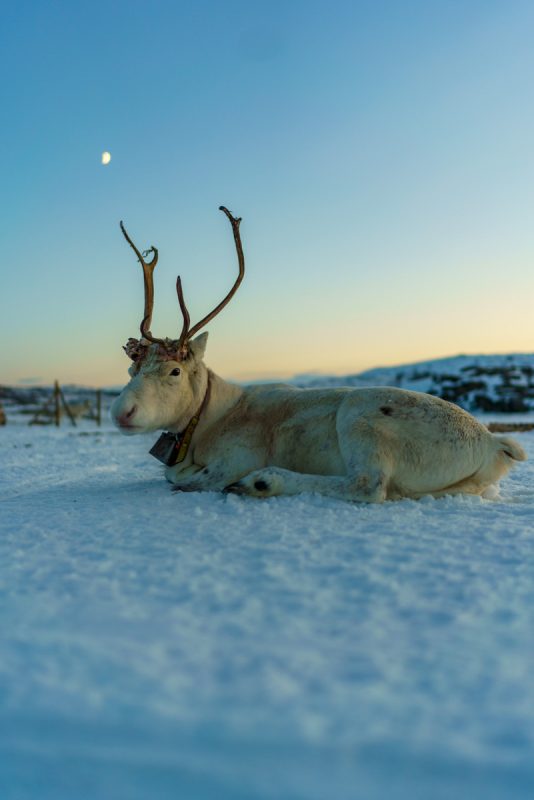
This blog post contains affiliate links. I was a guest of Widerøe airlines and Visit Tromsø. All opinions are my own.
Who are the Sami people in Tromsø?
The Sami are the native people of northern Scandinavia and the Kola Peninsula of Russia (the region is collectively called Sápmi). They’ve lived in this part of Europe for at least 3,500 years in a semi-nomadic way, using reindeer for transport, food and livelihood.
There have historically been three main groups of Sami:
- one group lived by the coast and fished for food
- another lived off the land, hunting reindeer at first, then moving to reindeer herding
- a third group was nomadic
Many Sami people followed traditional reindeer migrating patterns, which crossed what are today international borders.
Oppression of the Sami people
From the 15th century, Norwegian farmers began to colonise Sami lands, using them to grow their own crops.
This was followed by brutal mistreatment from the Norwegian government, with harsh laws and general prejudices in place to strip the Sami people from their rights.
For example, a school policy was introduced at the end of the 1800s which instructed that children were only to be taught in Norwegian, banning instruction in the Sami official language. Their land was frequently taken from them, and racism was rampant.
Sami Rights Commission
Things thankfully started to turn around in the latter part of the 20th century when tribes from the four countries met and founded the Sami National Parliament.
The Sami Rights Commission was created in 1980. The Sameting, or Norwegian Sami Assembly, was created in 1989 and represented the Sami people in government.
Sami people gained rights to their native land in 2005, and the Reindeer Herding Act was passed in 2007, which acknowledged that Sami groups had rights to the country’s reindeer.
There’s no taking back the cruel mistreatment that happened in the past, but the King of Norway and politicians have apologised for the unjust historical treatment of the native people.
It’s crucial to learn about the full history of the Sami people to understand the importance of commemorating their customs and community.
Modernisation in Sami cultures
Modernisation has meant that a lot of Sami customs have been lost. It’s easier nowadays to ride snowmobiles rather than reindeer sleighs, and younger Sami people are often more interested in living in Oslo or Bergen than working on their family’s ranches.
“My parents weren’t reindeer herders, but my grandparents were”, our Sami guide, Per, told us. “In Sami culture, either your parents or grandparents have to be reindeer herders for you to be one. I went to live with my grandparents to learn about herding. But now my children have to want to be reindeer herders for it to stay in my family”.
Modern farming also looks completely different from a few hundred years ago, and while the number of reindeer herders is falling (there are around 3,500 Sami reindeer herders in Norway, out of 40,000 Norwegian Sami or 80,000 Sami people in total), new technology makes it more efficient.
Tourism to Sami camps
Tourism has, in many ways, helped to preserve some traditional Sami customs; while most Sami don’t live as traditional a life as you may learn about at one of the Sami camps, visiting and learning about their history and identity helps to keep their culture alive.
How to visit the Sami people in Tromsø
Whether you watch the reindeer racing or take part in one of the Sami tours, there are a few ways to experience Sami culture in Tromsø.
These activities are only available in the winter; Sami people tend to herd reindeer away from Tromsø in the summer months.
Visit a Sami camp

We joined this Sami tour from Tromsø, which is one of the most popular and comprehensive in this part of Norway.
which departed from the Radisson Blu Hotel in the city centre and drove 45 minutes to reach a Sami camp. “I’ll be your guide tonight” Per, a local Sami reindeer herder, told us as we disembarked the bus.
We walked over to the reindeer pen and tentatively stepped in, brandishing buckets full of reindeer feed.
The creatures knew what time it was, walking over to whoever was holding a bright blue bucket and immediately nudging their way in. They weren’t aggressive, but were rather assertive, ensuring that there wasn’t a bucket in sight that didn’t have a reindeer snout in, plying for food.
After my first bucket was empty, I opted to stand on the sidelines and merely observe the creatures. Like most children in Christmas-celebrating countries, I grew up hearing tales of Santa’s reindeer.
In fact, all reindeer in Lapland are owned by Sami people; and this was my first time seeing these animals in the flesh.
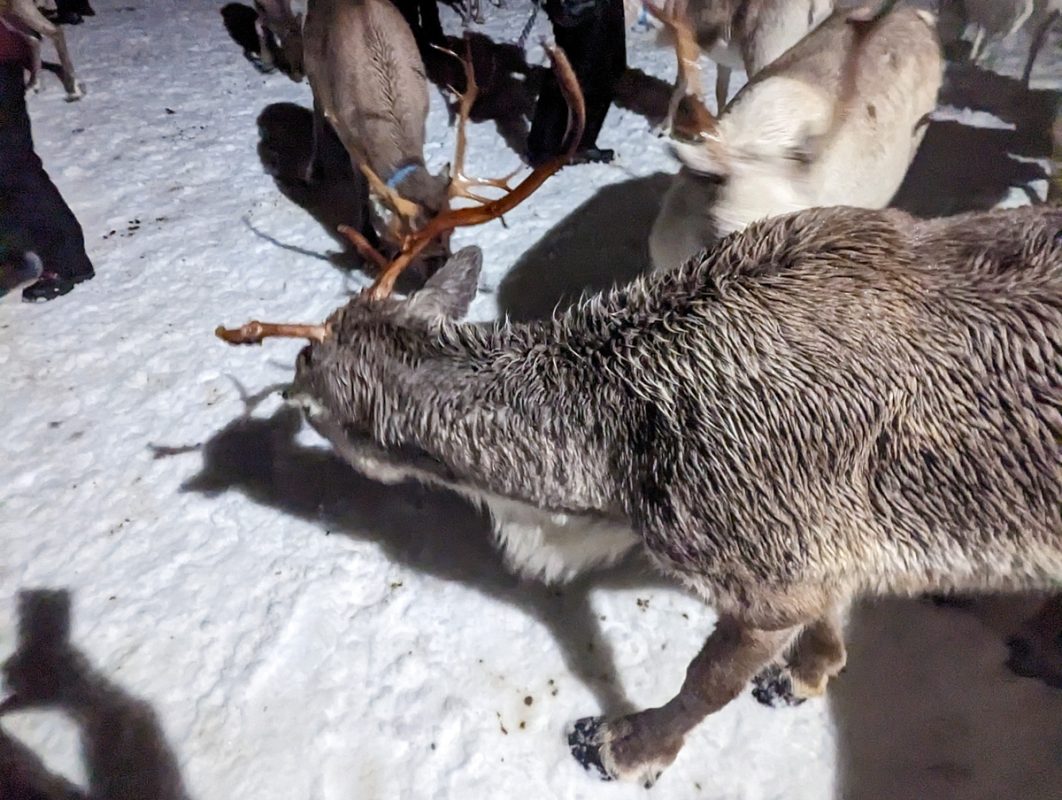
After feeding the reindeer, you may have a chance to go reindeer sledding. This isn’t always possible, depending on the snow conditions; for us, the ground was too slushy to attempt it.
Once we were reindeer-ed out, we were invited into a lavvu, which is a particular type of Sami tent, to enjoy hot drinks and dinner.
This is typically reindeer stew (which is called bidos), but don’t worry if you’re veggie; vegetarian options are available.

After dinner, it was time to hear a few interesting facts about Sami culture and life deep in the Arctic circle. Per, our guide, told us about marriage, family, clothes and reindeer herding and answered many of our questions about Sami people
The evening usually ends with Joik singing, but Per was recovering from a cold when we visited and didn’t feel like his throat was up to it!
However, I found this video on YouTube:
It was a busy tour, which meant that it wasn’t quite as personal as I would have liked; while Per was very happy to answer any questions, I was conscious of asking too many as there was such a big group.
However, the surroundings remained very authentic, and Per himself is a Sami reindeer herder, so his first-hand experiences were fascinating.
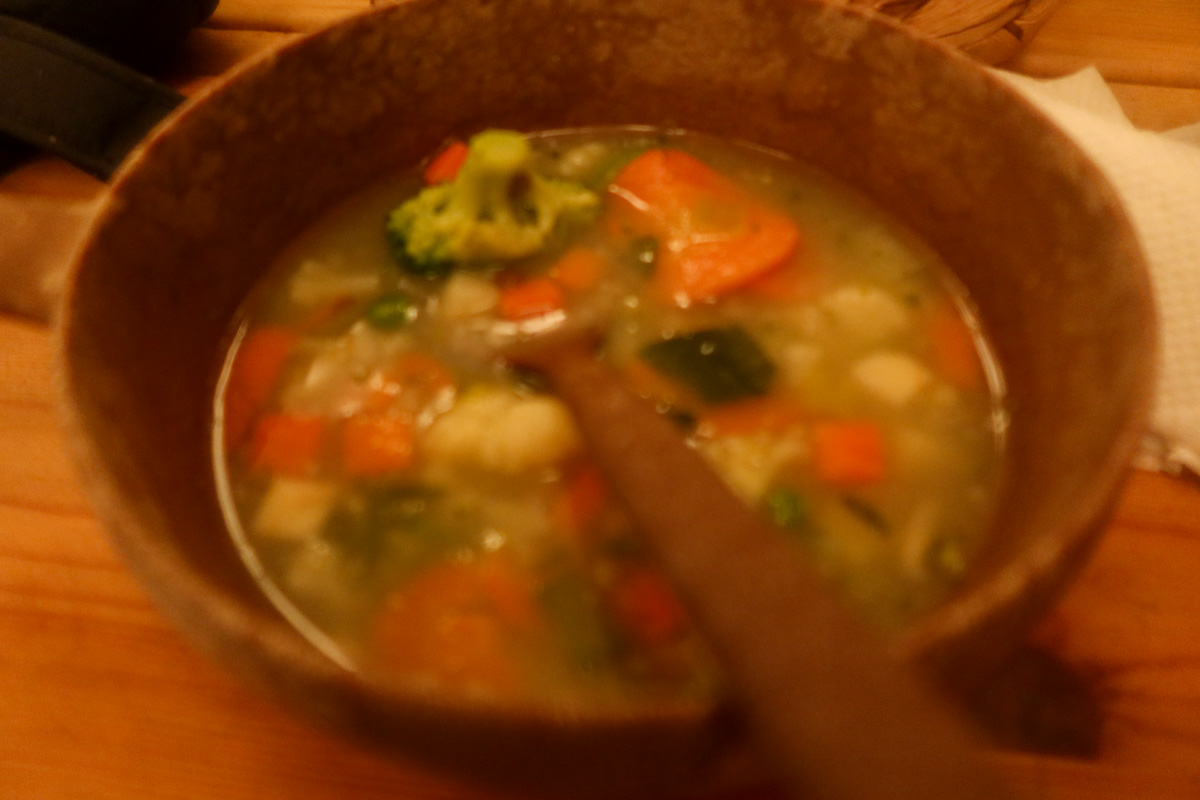
Spend the night
For a more immersive Sami experience near Tromsø, you can spend the night at the Sami camp.
We didn’t experience this, but I imagine it provides more of an insight into Sami culture, particularly traditional homes and food.
The reviews of staying at the Sami lavvu are very positive, with many reviewers dubbing it to be the “best part of the night” and detailing that the “morning light was stunning”.
Plus, many reviewers consider it to be a wonderful chance to spend a night in the Arctic countryside!
You can read more about sleeping in the camp overnight by clicking here.
Other Sami tours around Tromsø
The tour that we embarked upon was probably the most popular Sami tour in Tromsø, but there is a range of others that may be more suitable, depending on your group size and interests.
Here are some others, all available on Get Your Guide.
- This reindeer sledding and feeding experience by Tromsø Arctic Reindeer
- This Sami reindeer sledding experience with the chance to see the northern lights (here’s my full blog post about seeing the northern lights in Tromso)
- Reindeer sledding evening at Camp Tamok
Celebrate Sami week in Tromsø city
If you’re visiting Tromsø in February, you won’t have to go far to experience Sami culture. In fact, February 6th is Sami National Day, and the following week is Sami week when you can enjoy various traditional Sami activities.
While the Sami flag, which has blue for water, yellow for sun, green for nature and red for blood on it, can usually be found flying in places all over Tromsø, you’ll notice it flying with even more gusto throughout Sami national week.

Activities during the week include joik chanting, the national championship in lasso throwing and opportunities to enjoy traditional Sami concerts.
We were in town for the reindeer racing. This involved reindeer pulling their Sami owner on skis; there were several heats and the winner was whoever completed the course in the shortest time in the final.

Taking around three hours (with a couple of breaks for snowshoeing races – which we were invited to but politely declined to partake in due to the fact that most other people were amateur professionals!), this extravaganza offered the exhilarating opportunity to see the reindeer charge to the finish line.
The tournament terminated with the winner being crowned and the Sami national anthem being sung.
Facts about Sami culture and customs
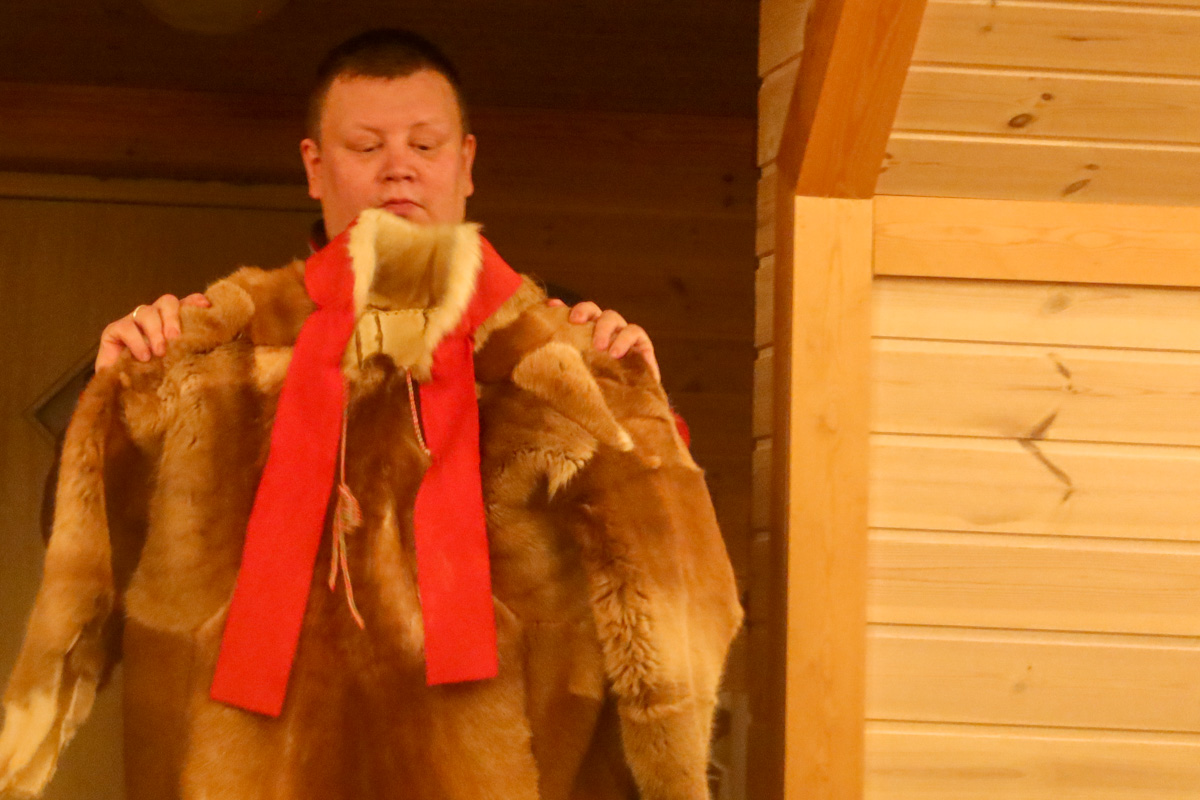
While you’ll learn all about Sami culture and customs during any Sami experiences close to Tromsø, here are a few in particular that I found intriguing:
- Sami people use all parts of reindeer for eating or as material – apart from the kidneys.
- There are five main predators of reindeer, the eagle being the most common, although Per thought that the violent Wolverines were the biggest nuisance, telling us “they are my nemesis”.
- Over 2,000 people attend Sami weddings, and they often stretch over three days. “If you stay at the wedding until the cleaning crew arrives then you become the cleaning crew!” Per joked.
- Traditional Sami clothes often hint at their relationship status. Round coins on a belt mean that you’re not married; most Sami people change these coins to square on their wedding day. If ribbons on a Sami person’s shoes point forward, it means that they’re not available, but if they point to the side, they are available.
- Sami people have a strong connection with the northern lights, believing them to be spirits going to the next life, and it’s important to not wave to it.
What to wear when visiting Sami camps
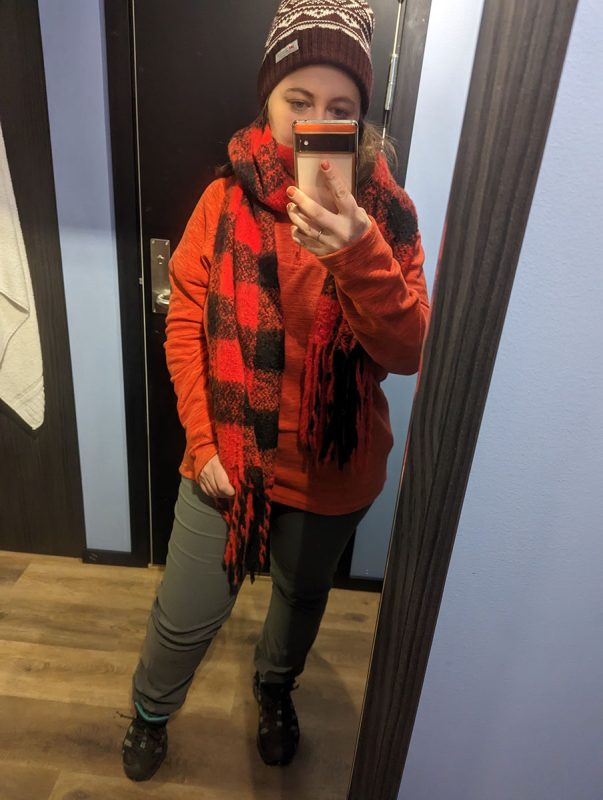
As the Sami camp tours take place in the freezing Arctic winter, there are a few essential items that you should make sure that you pack!
- Waterproof boots: Please learn from my mistakes and check that your boots are waterproof before travelling to Norway in winter. My hiking boots used to be waterproof, but after a lot of wear they have lost their waterproof-ness, and they left my feet soaking wet on numerous times throughout my Northern Norway trip! I’ve got my eyes on these ones which I’ll buy next time I’m going for somewhere that calls for waterproof boots. Here’s a UK link to waterproof boots, and here’s a USA link.
- Layers: It’s imperative that, when you’re hanging around in the Arctic tundra, you’ll need layers. I recommend a base layer of thermals, a middle layer of tracksuit bottoms and a jumper, and a layer of waterproof ski gear. Here’s a UK link to thermals, and here’s a USA link.
- Ski gear: While your outer layer doesn’t have to be ski-specific, I found that clothes that are made for skiing are the best in terms of insulation and water resistance. I bought a ski coat and salopettes from Go Outdoors (UK only) before my Norway winter trip and they came in very handy in Tromsø!
- Gloves, scarf and hat: Of course, you’ll also need winter woolies – a good quality wooly hat, scarf and gloves. Here’s a UK link to winter woolies, and here’s a USA link.
- Headlamp: Most Sami ranches are far out of the city, so there won’t be much artificial light. This is great news if you want to catch the northern lights! However, if you’re navigating around the camp, you might find a headlamp to be useful – this will help you to explore the terrain hands-free. Here’s a UK link to a headlamp, and here’s a USA link.
- Power bank: One of Northern Europe in winter’s issues is that the frigid weather conditions can cause batteries to drain and phones to reboot. I had this issue repeatedly when I was in Reykjavik in January, although as the weather was milder in Tromsø it didn’t pose so much of an issue. But you never know how cold it’ll be (as the Sami ranches are inland a little, they’re usually colder than Tromsø), so I highly recommend taking a power bank to give your phone an extra boost if needed – this is particularly essential if you’re using your phone as a camera. Here’s a UK link to a power bank, and here’s a USA link.
FAQs about Sami tours in Tromsø
Are Sami tours in Tromsø ethical?
As a general rule of thumb, Sami tours in Tromsø are ethical if they’re run by Sami people. They should discuss Sami culture in a respectful way, and treat reindeer well (although generally, Sami people look after their reindeer exceptionally well).
Is Tromsø Sami?
There’s a large population of Sami people in Tromsø, although they traditionally lived outside of the city. Nowadays, Tromsø is a diverse place, with Sami people living alongside other Norwegians and people from elsewhere in the world.
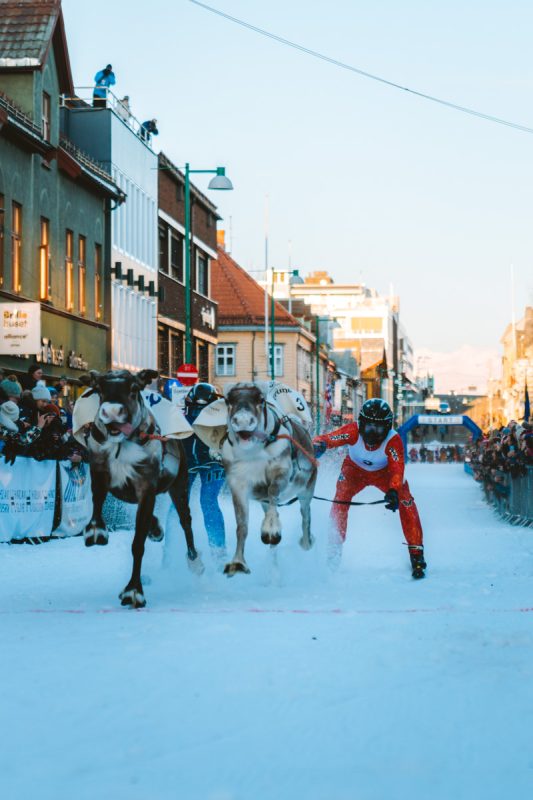
Where do most Sami people live in Norway?
The Sami people are an indigenous population living in Norway, Sweden, Finland, and Russia. In Norway, the majority of Sami people live in the northernmost counties of Finnmark, Troms, and Nordland.
Are Sami related to Vikings?
The Sami people and Vikings are two distinct populations with different cultural backgrounds. The Sami people are indigenous to the Scandinavian and Russian Arctic regions, while Vikings were primarily Norse seafarers who raided and traded across Europe during the Middle Ages.
All you need to know about visiting Sami people in Tromsø!
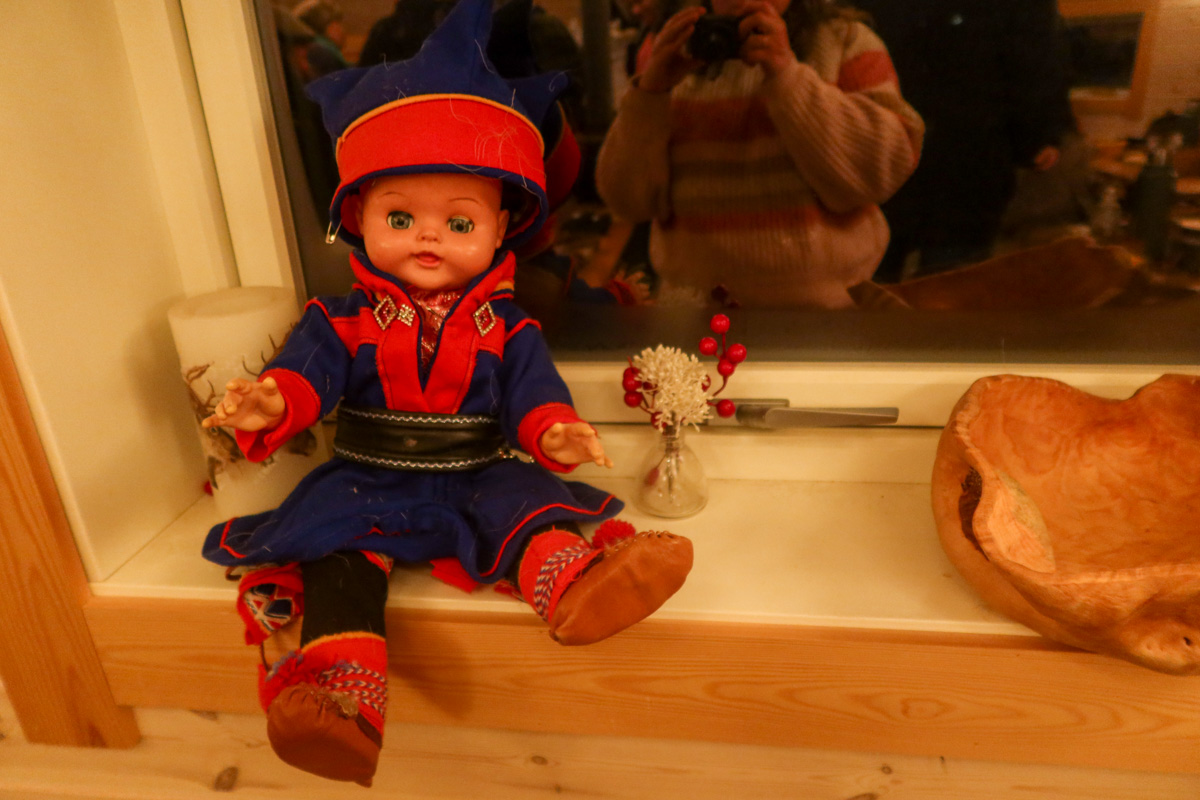
The culture and history of Northern Norway are intrinsically tied to its Sami people, and while you’re in Tromsø, it’s imperative that you spend some time learning about their culture and customs in a respectful manner.
Whether you do so by browsing a museum, visiting a Sami ranch or taking part in Sami week celebrations, these Sami experiences and tours will educate you about the indigenous people of Sapmi and give you a chance to learn about their traditions, which are at risk of being forgotten.
If you’re visiting Tromsø in winter, make sure that you add Sami experiences to your itinerary!

